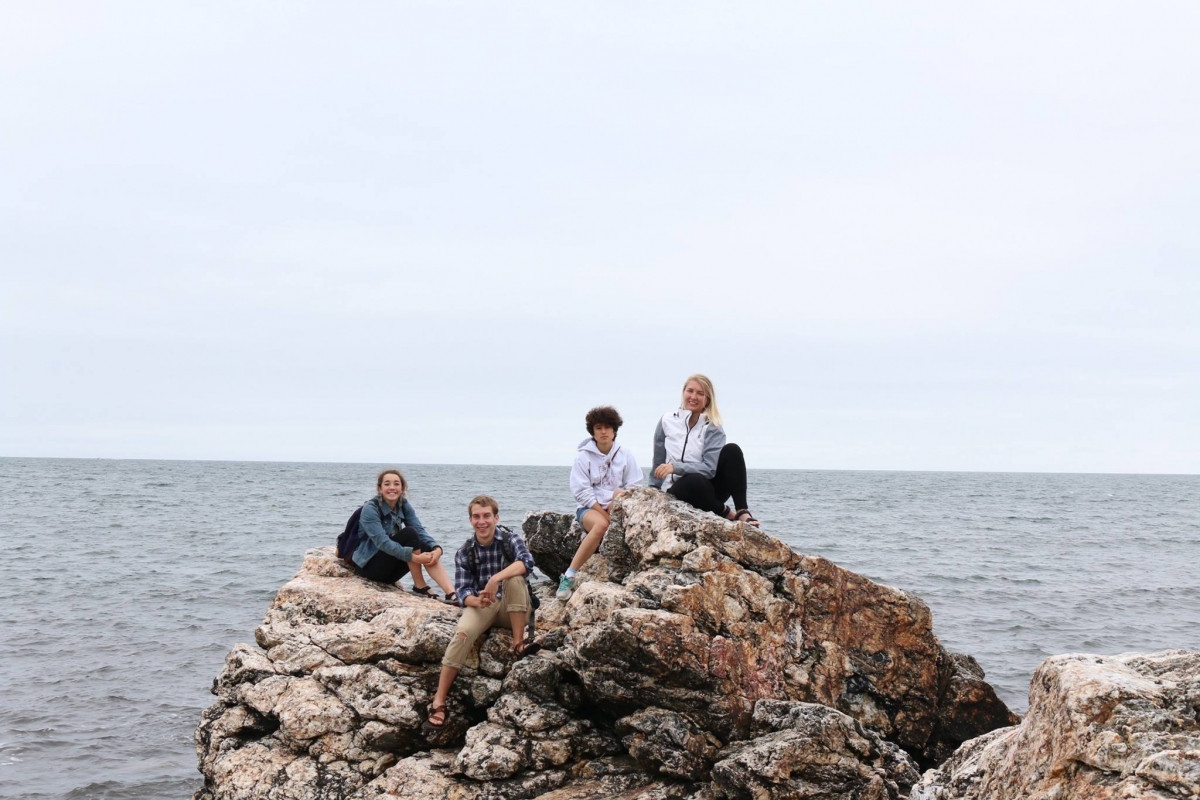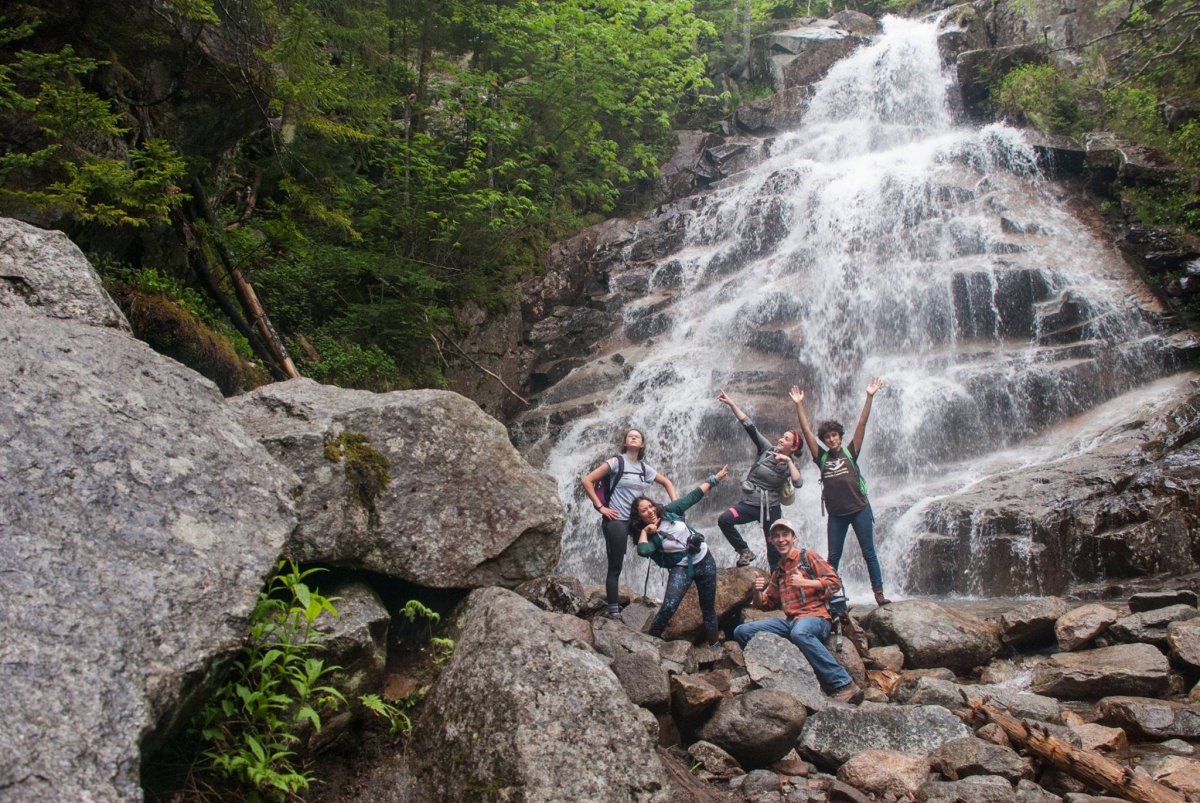You are here
Improving Forest Change Modeling, One Parameter at a Time
Alongside uncertainty about the stability of future climate conditions comes uncertainty about future landscapes: Where will our forests be in 200 years? Forest landscape models have been designed to address this. Forest landscape models take small-scale ecological phenomena and apply them across large spatial and/or temporal scales. LANDIS-II (“LANdscape DIsturbance and Succession”) is a forest landscape model that consists of a core program with several extensions that are downloaded separately and can be individually activated to simulate various ecological processes. Together with its extensions, LANDIS-II simulates colonization (will trees spread to new locations?), photosynthesis (how quickly will trees grow?), succession (how will community composition change?), and disturbance (how will trees respond to fire, wind, harvest, and/or climate change?) processes. Taking all of these inputs into account, LANDIS-II generates predictions of forest biomass and spatial composition.
Until recently, LANDIS-II has relied on succession extensions that use historic relationships between climate conditions and forest change to predict how forests will respond to future climates. However, using old patterns to predict growth under completely new conditions presents some problems. Forest growth is the product of many smaller-scale processes, each of which might respond to a given disturbance in a different way. While statistical predictions might be sufficient for predicting forest responses to previously observed climates, we don’t know whether forests will follow those same patterns under climate change.
Instead of relying on statistical inferences from the way climate has historically affected tree growth, a new LANDIS-II extension called “PnET-Succession” is process-based – it uses the small-scale forest processes (e.g., foliar nitrogen content percentage and optimal photosynthetic temperature for each individual species) as inputs, and it uses their combined responses to climate and disturbance to predict forest growth.
While taking a process-driven approach would ideally make LANDIS-II outputs more accurate, lots of uncertainty is introduced by including so many parameters in the model. In the classic Biomass Succession extension, model users just needed estimates of a few emergent forest characteristics (e.g., maximum biomass, decay rate, and mortality/growth curves). In contrast, PnET-Succession inputs are much more specific. While heaps of empirical data are available to approximate these values, each one still contributes its own small amount of uncertainty. My main task this summer is to quantify the extent to which the uncertainty surrounding individual PnET Succession input parameters contributes to uncertainty in the model outputs.
To test the contributions of various parameters to uncertainty in LANDIS-II outputs, I’m implementing a global sensitivity analysis. Global sensitivity analyses use search functions – in my case, a combination of trigonometric functions – to vary all tested parameters simultaneously so that the outputs of the model are explored through the whole parameter space. I chose to use the Fourier Amplitude Sensitivity Analysis (FAST), which samples parameter values using a method that allows the outputs to later be decomposed using a Fourier Transform. FAST sacrifices conceptual simplicity in favor of computational efficiency. Even using this efficient GSA, my final sensitivity analysis will require nearly 80,000 separate LANDIS-II simulations to fully explore the parameter space.
By the end of my project, I hope to have quantified the importance of each PnET-Succession parameter using the FAST method. Using these results, LANDIS-II users can identify where uncertainty exists in their simulations, and researchers can prioritize data collection for parameters that are identified as being most crucial.
In pursuit of the above goal, my days typically consist of lots of code-writing. I have written scripts using R, an open-source statistical programming software, that create thousands of input directories, adjust all of the input text files required for each model run, and then start running the model with 20-50 going continuously at any given moment. Because computing power is in high demand (the Thompson research group is constantly running models, and we try to use our computers as efficiently as possible), my scripts must be flexible enough to stop and restart LANDIS-II runs at a moment’s notice and to spread the analysis across multiple computers, even if computing space is only available for a couple days at a time. Once these model runs finish, I’ll have to process massive amounts of data. For a sense of scale: My analysis requires about 1.2 million input files, and I’ll be processing over 3 TB of information once it has finished.

Aside from my research project, much of the value of the Harvard Forest experience lies in my interactions with the people around me and in my enjoyment of the beautiful New England setting. I’ve been incredibly lucky to work with Jonathan Thompson’s all-star landscape ecology research group. Jonathan and my mentors Matthew Duveneck and Luca Morreale have helped me every step of the way, and they’re pretty great company too. Throughout the workday, I find myself constantly chatting with various Harvard Forest staff, all of whom are involved in very different kinds of ecology research and share my love of coffee.
After workdays and through the weekends, I spend my time with the other REU students. We’ve squeezed an impressive number of fun activities into such a short amount of time: hiking in the White Mountains, a weekend-long camping trip in Acadia National Park, a sunrise hike up Mt. Monadnock, a few trips to Boston, tours of the Ben and Jerry’s and the Cabot Cheese factories in Vermont, a random excursion to Rhode Island, “Forest Prom,” outdoor movie nights, campfires, and lots of hiking, biking, running, and swimming in and around Harvard Forest. It’s a miracle that I get any work done with so many fun opportunities – and fun people – nearby.


